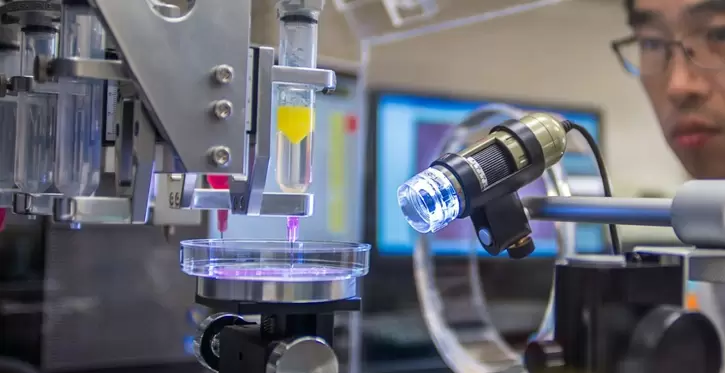
3D bioprinting is an advanced manufacturing technology that can produce unique tissue shapes and structures in a layer-by-layer manner of embedded cells, making this arrangement more likely to reflect the natural multicellular structure of blood vessel structures. A series of hydrogel bio-inks have been introduced to design these structures; however, the available bio-inks that can mimic the composition of natural tissue blood vessels have limitations. Current bio-inks lack high printability and cannot deposit high-density living cells into complex 3D structures, thereby reducing their efficiency.
To overcome these shortcomings, Gaharwar and Jain developed a new nano-engineered bio-ink to print 3D, anatomically accurate multicellular blood vessels. Their method provides improved real-time resolution for macrostructures and tissue-level microstructures, which is currently not possible with bio-inks.
A very unique feature of this nano-engineered bio-ink is that regardless of the cell density, it exhibits high printability and the ability to protect encapsulated cells from high shear forces during the bioprinting process. It is worth noting that 3D bio The printed cells maintain a healthy phenotype and remain viable for nearly a month after manufacture.
Utilizing these unique characteristics, nano-engineered bio-inks are printed into 3D cylindrical blood vessels, which are composed of living co-cultures of endothelial cells and vascular smooth muscle cells, which provides researchers with an opportunity to simulate the effects of blood vessels and diseases.
This 3D bioprinted container provides a potential tool for understanding the pathophysiology of vascular diseases and evaluating treatments, toxins or other chemicals in preclinical trials.












